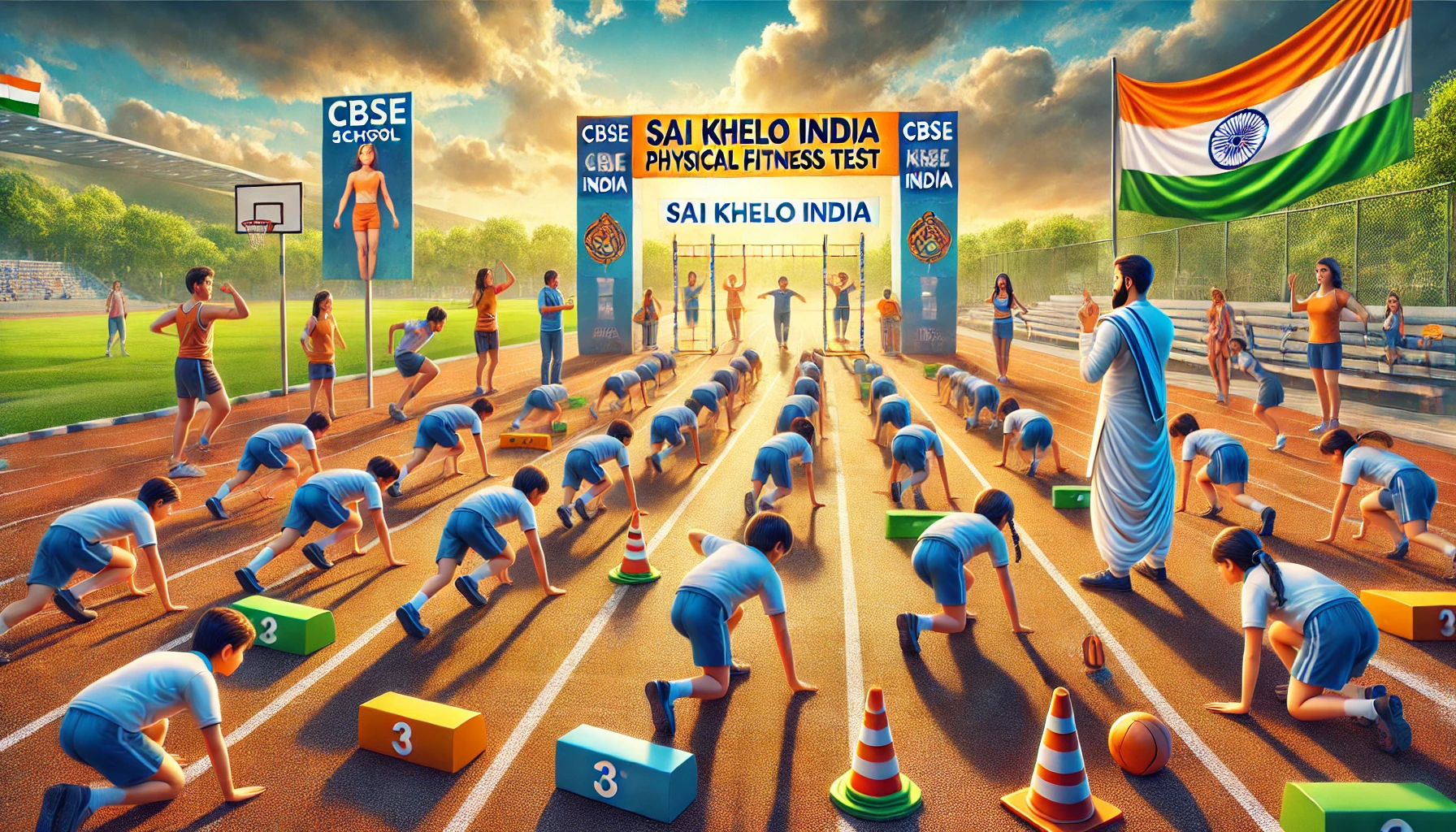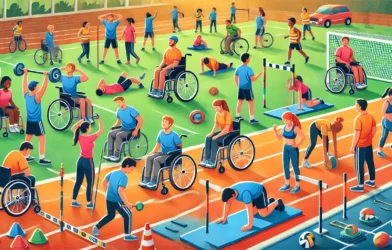Khelo India Programme is initiated by Sports Authority of India. Before diving further into that, ;ets atke a step back and understand the roots. Physical fitness is a crucial aspect of a student’s overall development. Recognizing this, the Central Board of Secondary Education (CBSE) has integrated the SAI Khelo India Physical Fitness Test or widely known as Khelo India Programme into its Physical Education curriculum. This test aims to evaluate various components of physical fitness, providing a comprehensive assessment of students’ physical health. This blog provides an extensive and detailed guide on each activity included in the SAI Khelo India Physical Fitness Test for students aged 9 to 18, covering the aim, equipment required, administration, scoring, evaluation, and prescription for each test.
Introduction
Physical fitness is not just about maintaining a healthy weight; it encompasses various aspects of physical health, including strength, endurance, flexibility, speed, and coordination. The Khelo India Programme is designed to measure these components, providing a well-rounded assessment of a student’s fitness level. This test is an essential part of the CBSE Physical Education curriculum, ensuring that students develop a solid foundation of physical health that will benefit them throughout their lives.
The tests are designed to be inclusive and cater to a wide range of physical abilities, encouraging all students to participate and improve their fitness levels. This comprehensive guide will help educators and students understand each test, ensuring accurate administration and effective training strategies.


1. Body Mass Index (BMI)


Aim
The BMI test aims to measure body composition, particularly the distribution of muscle and fat in the body. This test is crucial for identifying students who may be underweight, overweight, or at a healthy weight, providing a baseline for further fitness assessments and interventions.
Equipment Required
- Flat, clean surface
- Weighing machine
- Stadiometer or measuring tape
Administration
- Measure the Height: Have the student remove shoes and any heavy clothing. Stand straight against a wall with feet flat on the ground, looking straight ahead. Use a stadiometer or measuring tape to measure the height accurately to the nearest 0.1 centimeter.
- Measure the Weight: Ensure the weighing machine is placed on a flat, hard surface. Have the student stand in the center of the scale without shoes and heavy clothing. Record the weight accurately to the nearest decimal (e.g., 45.3 kilograms).
Scoring
- Calculate BMI: Use the formula BMI = Weight (kg) / (Height (m) x Height (m)).
- Record the BMI: Record the BMI value to the nearest decimal.
Evaluation
- Compare the BMI results against standard age and gender-specific charts to assess body composition.
- Identify students who may need nutritional or physical activity interventions based on their BMI category (underweight, healthy weight, overweight, or obese).
Prescription
- Balanced Diet: Recommend a diet rich in fruits, vegetables, whole grains, and lean proteins. Avoid sugary drinks and high-fat foods.
- Regular Physical Activity: Encourage at least 60 minutes of moderate to vigorous physical activity daily.
- Parental Involvement: Involve parents in promoting healthy eating and active lifestyles at home.
2. Partial Curl-Up Test
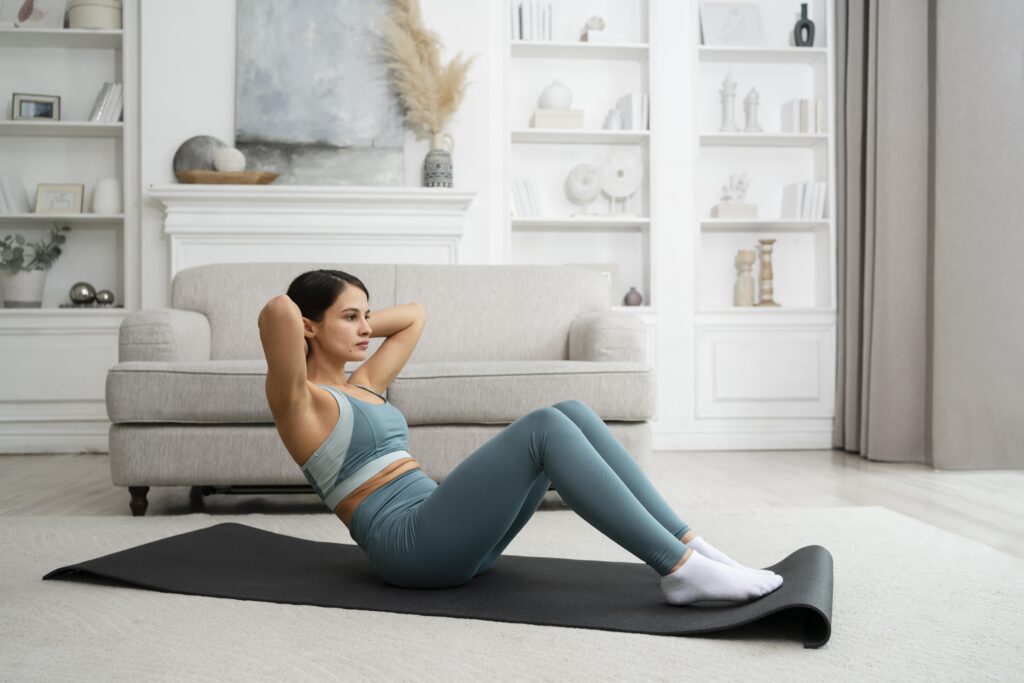

Aim
The partial curl-up test aims to measure the abdominal muscular strength and endurance. Strong abdominal muscles are essential for overall core stability, which supports daily activities and helps prevent injuries.
Equipment Required
- Flat, clean, cushioned surface
- Stopwatch
- Recording sheets
Administration
- Starting Position: The student lies on their back with knees flexed at 90 degrees, feet flat on the ground, and hands straight by the sides, palms facing down.
- Performing the Curl-Up: At the signal, the student performs curl-ups, lifting the shoulder blades off the ground and reaching forward along the mat, then returning to the starting position. Repeat this as many times as possible in 30 seconds.
Scoring
- Record the number of curl-ups completed in 30 seconds.
- The higher the number, the better the performance.
Evaluation
- Compare the curl-up counts against standard benchmarks for age and gender to assess core strength.
- Identify students who may need improvement in abdominal strength.
Prescription
- Core-Strengthening Exercises: Recommend exercises such as planks, leg raises, and Russian twists to enhance abdominal strength.
- Engage in Core Activities: Encourage participation in activities that require strong core stability, such as gymnastics, swimming, or martial arts.
3. Push-Up Test
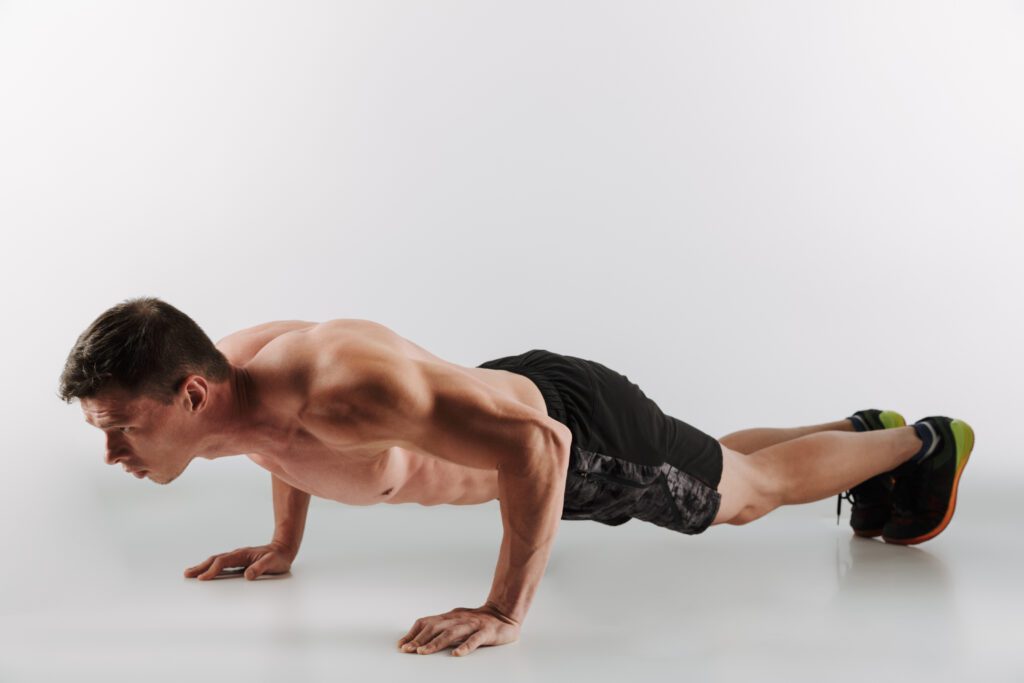

Aim
The push-up test aims to assess upper body strength and endurance. This test is vital for evaluating the strength of the chest, shoulders, and triceps, which are essential for various physical activities.
Equipment Required
- Flat, clean surface or gym mat
Administration
- Starting Position: Boys perform standard push-ups with hands and toes on the ground, body straight, and arms at shoulder width. Girls perform modified push-ups with knees resting on the ground.
- Performing the Push-Up: At the signal, the student lowers their body until their elbows are at a 90-degree angle, then pushes back up to the starting position. Continue this as many times as possible with proper form.
Scoring
- Record the number of correctly completed push-ups.
- The higher the number, the better the performance.
Evaluation
- Compare the push-up counts against standard benchmarks for age and gender to assess upper body strength.
- Identify students who may need improvement in upper body strength.
Prescription
- Upper Body Exercises: Recommend exercises such as bench presses, shoulder presses, and tricep dips to build upper body strength.
- Functional Activities: Encourage participation in activities that require upper body strength, such as climbing, rowing, or boxing.
4. Sit and Reach Test
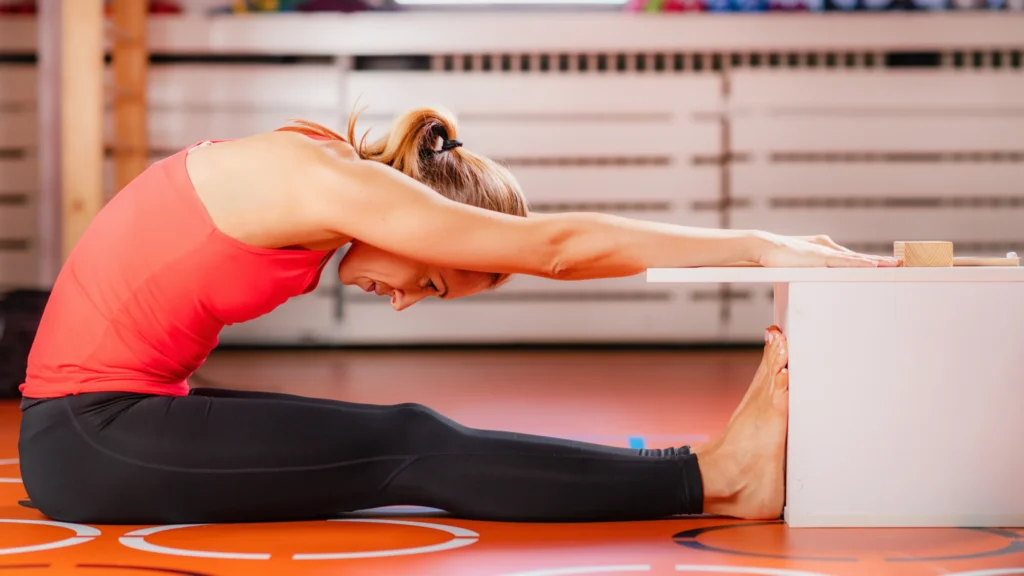

Aim
The sit and reach test aims to assess the flexibility of the lower back and hamstrings. Flexibility in these areas is crucial for overall mobility and injury prevention.
Equipment Required
- Sit and reach box or a flat surface with a measuring tape
Administration
- Starting Position: The student sits with legs extended straight, feet flat against the box or measuring tape, and arms extended forward.
- Performing the Test: Slowly bend forward, reaching as far as possible without bending the knees. Measure the distance reached in centimeters or inches.
Scoring
- Record the distance reached in centimeters or inches.
- The further the reach, the better the flexibility.
Evaluation
- Compare the distances against standard benchmarks for age and gender to assess flexibility.
- Identify students who may need improvement in flexibility.
Prescription
- Stretching Exercises: Recommend stretching exercises such as hamstring stretches, calf stretches, and lower back stretches to improve flexibility.
- Flexibility Activities: Encourage participation in activities that promote flexibility, such as yoga, Pilates, or gymnastics.
5. 600-Meter Run/Walk
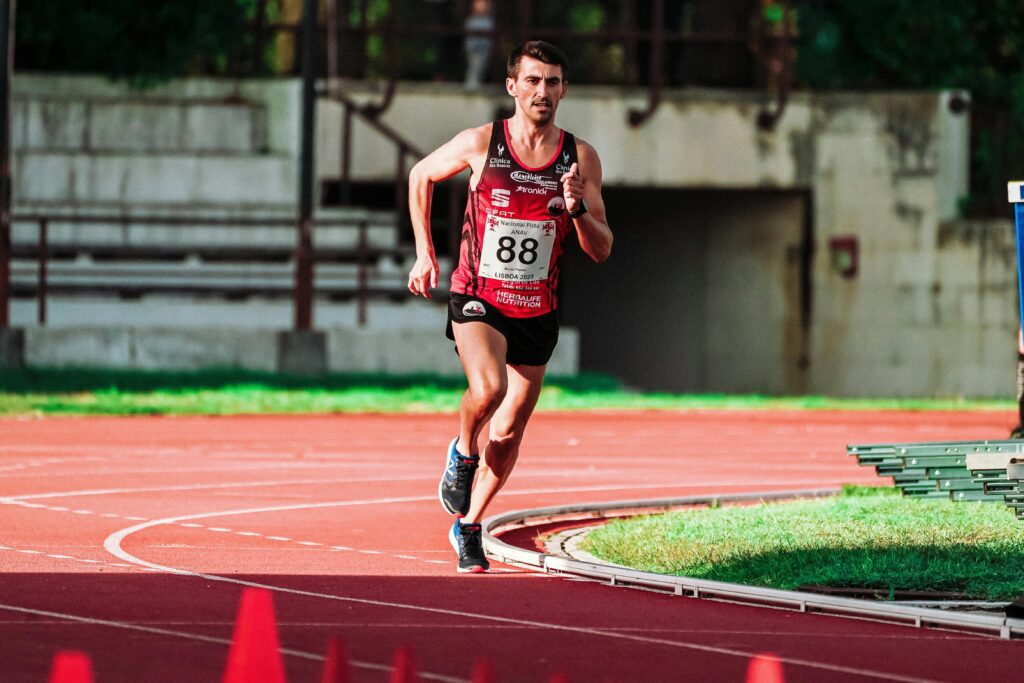

Aim
The 600-meter run/walk aims to evaluate cardiovascular endurance. This test is crucial for assessing the efficiency of the cardiovascular and respiratory systems in sustaining prolonged physical activity.
Equipment Required
- Measuring tape or marked track
- Stopwatch
- Cones or markers
Administration
- Set Up: Set up a track with clear start and finish lines, marking a distance of 600 meters.
- Performing the Run/Walk: The student runs or walks 600 meters as fast as possible. Use the stopwatch to record the time taken to complete the distance.
Scoring
- Record the time taken to complete 600 meters in minutes and seconds.
- The faster the time, the better the cardiovascular endurance.
Evaluation
- Compare the times against standard benchmarks for age and gender to assess cardiovascular endurance.
- Identify students who may need improvement in endurance.
Prescription
- Aerobic Exercises: Recommend aerobic exercises such as running, cycling, and swimming to improve cardiovascular endurance.
- Endurance Activities: Encourage participation in endurance sports like cross-country running, swimming, or cycling.
6. 50-Meter Dash
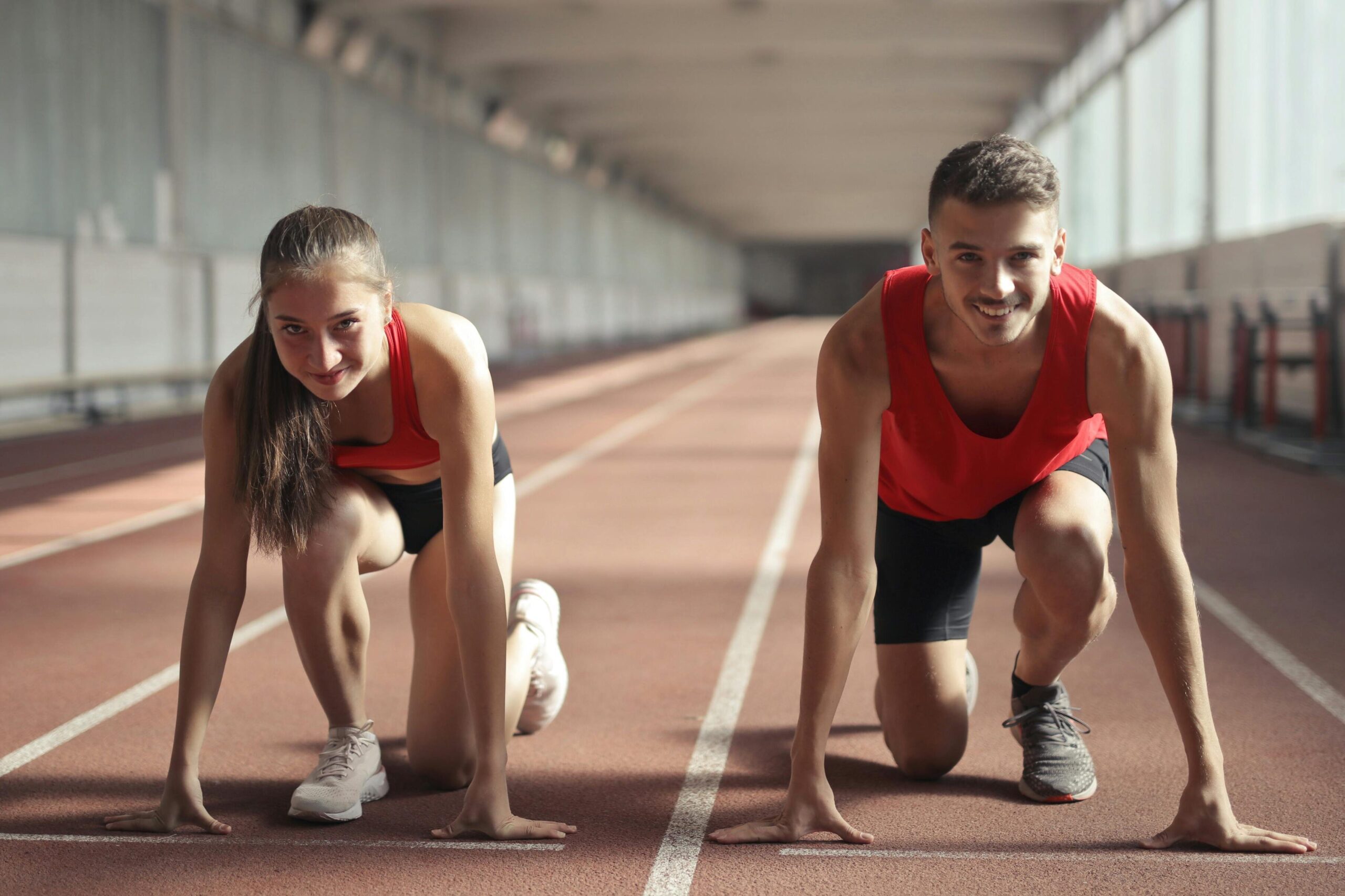

Aim
The 50-meter dash aims to measure speed and acceleration. This test is essential for evaluating how quickly a student can accelerate and maintain top speed over a short distance.
Equipment Required
- Measuring tape or marked track
- Stopwatch
- Cones or markers
Administration
- Set Up: Set up a straight, flat track with clear start and finish lines, marking a distance of 50 meters.
- Performing the Dash: The student sprints from the starting line to the finish line as fast as possible. Use the stopwatch to record the time taken to complete the 50 meters.
Scoring
- Record the time taken to complete 50 meters in seconds.
- The faster the time, the better the speed.
Evaluation
- Compare the times against standard benchmarks for age and gender to assess speed and acceleration.
- Identify students who may need improvement in speed.
Prescription
- Speed Training: Recommend interval training, sprint drills, and agility exercises to enhance speed and acceleration.
- Quick-Burst Activities: Encourage participation in sports that require quick bursts of speed, such as soccer, basketball, or track events.
Conclusion
Khelo India Programme provides a comprehensive assessment of various physical fitness components essential for students’ overall development. By understanding and implementing the detailed guidelines for each test, students can effectively prepare for these assessments and improve their fitness levels. Regular practice, coupled with the right exercises and activities, will help students achieve their best performance and maintain a healthy lifestyle.
Educators play a vital role in this process by ensuring that each test is administered correctly and by providing the necessary support and encouragement to students. Regular assessments and structured training programs will ensure continuous improvement and help in identifying areas that need more focus.
By following this extensive guide, educators and students can better understand each component of the Khelo India Programme, ensuring a thorough and effective fitness assessment. This holistic approach not only promotes physical health but also fosters a culture of fitness and well-being in schools. The inclusion of these physical activities helps in developing various aspects such as strength, flexibility, endurance, and speed, which are crucial for a student’s growth.


